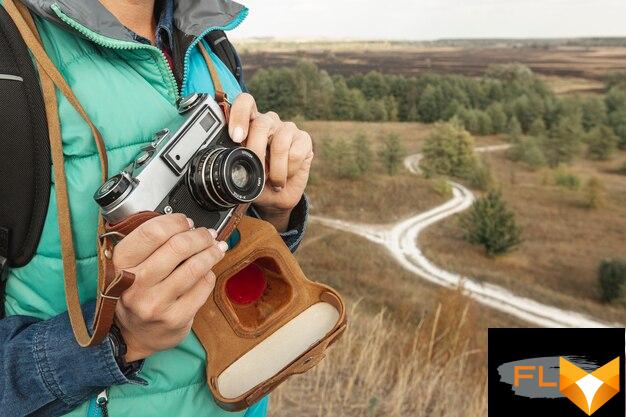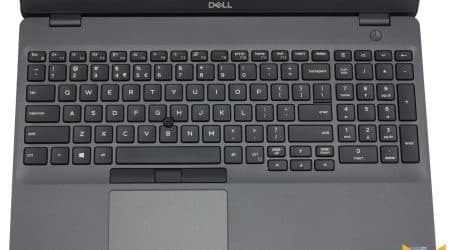


Discover the Best Bridge Cameras for Every Photography Enthusiast in 2025
If you seek versatile tools that combine a wide zoom range with solid image quality, consider the models from Canon, Panasonic, and Nikon. Canon PowerShot SX70 HS stands out with its impressive 65x optical zoom and 20.3 MP sensor, allowing you to capture stunning details from afar while maintaining clarity. The user-friendly interface makes it suitable for both novices and seasoned shooters alike.
Panasonic Lumix FZ1000 II is another remarkable choice, featuring a 1-inch 20.1 MP sensor that elevates low-light performance. This option supports 4K video recording, appealing to those who wish to explore videography alongside still photography. Its robust build and ergonomic design enhance the shooting experience, providing comfort during extended use.
Nikon Coolpix P1000 takes things further with a staggering 125x zoom lens, perfect for wildlife and sports photography. The BSI CMOS sensor ensures sharp images in various lighting conditions, and the built-in Wi-Fi allows for seamless sharing of your captures. With manual controls available, this model caters to individuals eager to experiment with creative settings.
Each of these selections serves different needs and preferences, making them commendable choices for your photographic pursuits. Dive into these options to elevate your photography game and capture moments like never before.
Understanding Key Features of Bridge Cameras
Focusing on zoom capabilities, look for models with a wide optical range, ideally 20x or more, allowing versatility from wide-angle landscapes to distant subjects.
The sensor size influences image quality; consider options with larger sensors, such as 1-inch types, for better performance in low light and enhanced detail.
Fast autofocus systems are crucial for capturing moving subjects. Evaluate models equipped with phase-detection technology for quicker and more accurate focusing.
Image stabilization is crucial when dealing with long focal lengths. Optical stabilization systems minimize blurriness caused by camera shake.
Manual controls enhance creative freedom. Seek devices with dedicated dials for exposure settings, giving you greater control over every shot.
Connectivity features are beneficial for modern usage; Wi-Fi and Bluetooth allow for easy sharing and remote control via smartphone.
Prioritize viewfinders, particularly electronic variants that offer real-time exposure previews, making it easier to compose shots in bright environments.
Battery life can vary significantly, so assess models that provide extended operation, especially during long shoots or travel.
Weight and ergonomics should not be overlooked; a comfortable grip and manageable weight are crucial for prolonged usage without strain.
Comparing Price Ranges: What to Expect
For those seeking high-quality shooting options, products in the $300 to $500 range often provide a solid balance of features and performance. Models like the Canon PowerShot SX540 HS and Nikon Coolpix B500 offer respectable zoom capabilities and image stabilization, making them suitable for casual users and enthusiasts alike.
$500 to $800 Range
Moving up to the $500 to $800 segment, brands showcase enhanced zoom, improved low-light performance, and advanced manual controls. Look for models such as the Panasonic Lumix FZ80 or the Sony RX10 III, which present faster lenses and superior image sensors. These devices cater to more serious hobbyists, allowing for greater creative expression.
Premium Price Range: $800 and Above
In the premium bracket, beginning at $800, options like the Fujifilm X-S10 or the Canon PowerShot G3 X stand out. They feature larger sensors and superior build quality, ensuring exceptional image quality and versatility. These choices attract those who pursue more demanding photography, providing advanced connectivity and professional-grade features that facilitate a variety of shooting styles.
Selecting the right option depends on one’s specific needs and budget, ensuring a satisfying experience while capturing moments with precision.
Assessing Zoom Capabilities: How Much Do You Really Need?
For most enthusiasts, a zoom range between 20x to 30x meets diverse photographic expectations. This level allows for capturing distant subjects like wildlife while providing flexibility for portraits and landscapes.
Understanding Zoom Types
Optical zoom is crucial for image clarity when magnifying subjects. Look for models that offer at least 16MP resolution; this ensures that images remain sharp even when highly zoomed in. Digital zoom is generally less effective, as it crops the image and reduces detail.
Practical Use Cases
If your focus includes wildlife or sports, consider a device with at least 30x zoom. This granularity lets you capture fleeting moments unobtrusively. For events or general photography, a 10x to 20x range serves well, providing enough versatility for various scenarios.
Low-Light Performance: Best Models for Night Photography
The Canon PowerShot G3 X excels in low-light environments with its 1-inch sensor and a maximum aperture of f/2.8. This combination enables exceptional image quality in dim lighting, minimizing noise and enhancing detail. Its manual exposure controls provide versatility for capturing night scenes.
Nikon Coolpix P950
The Nikon Coolpix P950 stands out thanks to its impressive 83x optical zoom paired with a fast lens. The f/2.8 aperture contributes to great low-light shots, while the built-in stabilization minimizes blurriness from handshake during longer exposures. It allows for RAW file capture, giving you more control in post-processing.
Sony Cyber-shot RX10 IV
The Sony Cyber-shot RX10 IV offers outstanding sensitivity thanks to its back-illuminated 1-inch sensor. The variable aperture starting at f/2.4 enhances its capability in darker settings. Fast autofocus and continuous shooting at 24fps facilitate capturing movement in low-light scenarios, making it a solid choice for night events.
Reviewing Battery Life: Which Cameras Last the Longest?
The Fujifilm FinePix S9940W stands out with a remarkable battery performance, offering up to 600 shots on a single charge. This model is ideal for long shooting sessions without the need for frequent recharging.
Canon PowerShot SX70 HS provides impressive longevity as well, managing approximately 325 images per charge. Its powerful features combined with solid battery life make it a reliable choice for enthusiasts who enjoy extended outings.
Another strong contender is the Nikon Coolpix B600. With its ability to capture around 300 shots, it remains favorable under demanding conditions, ensuring consistent usability during photography adventures.
The Panasonic Lumix FZ80 also performs admirably, with a rated capacity of nearly 330 pictures per battery cycle. This model excels in both function and endurance, making it suitable for capturing a variety of subjects.
Lastly, the Sony RX10 IV offers around 650 shots per charge, placing it at the forefront in terms of durability. Its balance of power and battery efficiency makes this device a preferred option for extended coverage during shoots.
Examining User-Friendly Interfaces: Perfect for Beginners
One standout model is the Canon PowerShot SX540 HS. This device boasts a simple layout with clearly labeled buttons, making it ideal for novices. The mode dial offers easy access to various shooting settings, from automatic to manual controls.
Features to Look For
- Intuitive Menu System: Opt for options that present settings and adjustments in a straightforward manner, such as the Nikon Coolpix B500. Its user interface is designed to minimize complexity.
- Touchscreen Functionality: A touchscreen can simplify navigation. The Sony Cyber-shot DSC-HX400V has a responsive screen that allows for quick adjustments and easy focus selection.
- Guided Modes: Look for models, like the Panasonic Lumix FZ80, that offer instructional modes for those just beginning. This helps users learn how to utilize different settings effectively.
Comfortable Grip and Lightweight Design
The physical design significantly influences usability. Cameras like the Fujifilm FinePix S9900W offer a comfortable grip and lightweight structure, enhancing handling during shoots. This makes it easier for beginners to experiment with various angles and compositions without fatigue.
Assessing user interfaces ensures a smooth transition into photography. Prioritize features that support learning and creativity while minimizing frustration during the initial experience.
Q&A: The best bridge cameras
What qualities should a photographer look for in a camera for wildlife photography?
A photographer should look for a camera with fast autofocus, high burst shooting rates, and good low-light performance when choosing the best camera for wildlife photography. Additionally, a weather-sealed body can be beneficial for outdoor conditions.
Is a mirrorless camera suitable for wildlife photography?
Yes, a mirrorless camera can be an excellent choice for wildlife photography. Many mirrorless models offer fast autofocus systems and high frame rates, making them competitive with DSLRs. They are also generally lighter and more compact, which is advantageous for long hours of shooting.
What are the advantages of using a DSLR for wildlife photography?
A DSLR is often favored by wildlife photographers due to its robust build, extensive battery life, and a wide selection of lenses. The optical viewfinder provides a clear view of the scene, which can be particularly useful when tracking fast-moving subjects.
Can a photographer achieve good results in wildlife photography with a smaller sensor camera?
Yes, a photographer can achieve good results in wildlife photography with a smaller sensor camera. While larger sensors typically offer better low-light performance and dynamic range, many smaller sensor cameras can still capture stunning images, especially in well-lit conditions.
What is the best camera type for beginners interested in wildlife photography?
For beginners interested in wildlife photography, a mirrorless camera or an entry-level DSLR can be the best camera choice. These options often provide user-friendly features, interchangeable lenses, and good autofocus systems that help new photographers capture quality images.
How does lens selection impact wildlife photography for a photographer?
Lens selection greatly impacts wildlife photography as it determines the reach and perspective a photographer can achieve. Telephoto lenses are essential for capturing distant subjects, while prime lenses often provide better image quality compared to zoom lenses.
What role does autofocus play in a photographer’s success in wildlife photography?
Autofocus is crucial for a photographer’s success in wildlife photography, as it allows for quick and accurate focus on fast-moving animals. Cameras with advanced autofocus systems can track subjects more effectively, improving the chances of capturing sharp images.
Are there specific features that make mirrorless cameras ideal for wildlife photography?
Mirrorless cameras are ideal for wildlife photography due to their silent shooting modes and fast continuous shooting capabilities. Additionally, many models have advanced eye-tracking autofocus, which helps photographers capture sharp images of animals in motion.
What should a photographer consider when choosing between a DSLR and a mirrorless camera for wildlife photography?
A photographer should consider factors such as weight, lens availability, battery life, and personal preference when choosing between a DSLR and a mirrorless camera for wildlife photography. Each system has its advantages, so it’s essential to evaluate what features matter most for individual shooting styles.
How can a smaller sensor affect the performance of a camera in wildlife photography?
A smaller sensor may limit the camera’s low-light performance and depth of field control compared to larger sensors. However, advancements in technology have allowed many smaller sensor cameras to perform well in various lighting conditions, making them viable options for wildlife photography if used appropriately.
What are the advantages of using a compact camera for birding?
A compact camera is lightweight and portable, making it easy to carry during long birding trips. Many compact models, like the Panasonic Lumix FZ2500, offer excellent image quality and features like a 125x optical zoom, which is beneficial for capturing distant birds.
How does the digital camera technology enhance birding experiences?
Digital camera technology has significantly improved birding experiences by providing features like high-resolution sensors, fast autofocus, and advanced image stabilization. Cameras like the Nikon P1000, with its huge zoom capabilities, allow birders to capture detailed images from afar.
What distinguishes the FZ2500 from other superzoom cameras?
The Panasonic Lumix FZ2500 stands out among superzoom cameras due to its 24-600mm lens range and great image quality. Its combination of a small sensor and advanced optical image stabilization makes it suitable for capturing sharp images of birds in various lighting conditions.
Can the FZ2000 be considered an all-in-one solution for birding?
Yes, the FZ2000 can be considered an all-in-one solution for birding as it combines a powerful 24-480mm lens with excellent image quality. Its long zoom capabilities make it ideal for capturing birds in their natural habitats without needing multiple lenses.
What is the significance of having a 600mm maximum zoom in birding photography?
Having a 600mm maximum zoom allows photographers to capture detailed images of birds from a significant distance without disturbing them. Cameras like the Nikon P1000 offer this capability, making it easier to photograph elusive species in the wild.
How does optical image stabilization benefit photographers using point-and-shoot cameras?
Optical image stabilization helps reduce blurriness caused by camera shake, especially when using long zoom lenses. This feature is crucial for point-and-shoot cameras like the Canon SX70, allowing photographers to achieve excellent image quality even at maximum zoom.
What features should photographers look for in point-and-shoot cameras for birding?
Photographers should look for features such as a long zoom range, good low-light performance, and an electronic viewfinder in point-and-shoot cameras for birding. Models like the Canon SX70 and Nikon P900 offer a wide angle of up to 25x optical zoom, which is beneficial for capturing various bird species.
How do small sensor cameras perform in birding photography compared to larger sensor models?
Small sensor cameras can still perform well in birding photography, especially with advancements in technology. While they may have limitations in low-light situations, models like the Panasonic Lumix FZ2500 provide great image quality and long zoom capabilities that enhance birding experiences.
What role does the electronic viewfinder play in capturing images of birds?
An electronic viewfinder provides a clear view of the scene and helps photographers track fast-moving birds more effectively. This feature is particularly useful in superzoom cameras like the Nikon P1000, where capturing fleeting moments is essential for successful bird photography.



